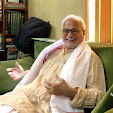The Indian Supreme Court and the quest for a 'rational' Hinduism
Ronojoy Sen (The Times of India,New Delhi
Ronojoy Sen (The Times of India,
South Asian History and Culture, Volume 1, Issue 1 January 2010, pages 86 – 104 - informaworld.com view references (19)
Gajendragadkar and Ramaswamy spoke a language very similar to Sarvepalli Radhakrishnan and his idea of 'pure' Hinduism. According to Radhakrishnan, 'At the moment, however, temples present an air of dull acquiescence and tedious routine. To attempt to abolish temples, which are so passionately loved and affectionately revered, is vain. But we must improve the tone and the atmosphere …. Worship in temples must be of the purest form.'97 Many of the court judgements echoed Radhakrishnan.
If figures like Vivekananda and Radhakrishnan made frequent appearances in Court judgements, there were also some notable absences. This is perhaps best illustrated in the marginalization of Vivekananda's teacher and guru, Ramakrishna Paramahansa. Ramakrishna, who can be located in the Bhakti tradition and was characterized by mysticism and unreason (pagalami), was a sharp contrast to his disciple Vivekananda, who established a Hindu monastic order to achieve social and religious reform. The contrast between these two figures is vividly expressed, as Sumit Sarkar has noted, in the disparities between the Dakshineswar temple (where Ramakrishna lived for over 30 years) and the Belur Math founded by Vivekananda. Sarkar writes, 'The temple [Dakshineswar], like any major Hindu sacred site, is thronged with crowds which cut across class divides, noisy, colorful, not over-sensitive to dirt …. Belur Math is much more of an upper middle class devotional-cum-tourist spot: almost aggressively hygienic, it is full of guards and notices warning visitors from bathing in the river or spoiling the lawns.'98
This study in contrast in a way admirably captures the approach of the Supreme Court and its essential practices doctrine. The essential practices doctrine can then be seen as the Court's attempt to discipline and cleanse religion or religious practices that are seen as unruly, irrational and backward by putting the state in charge of places of religious worship. But as Dhavan and Nariman point out, 'Religious faiths have to be run by their followers and not by bureaucrats. The followers have to emerge from the faith and not be appointed by the State or statute.'99 The Court has systematically appealed for legitimation to authoritative figures associated with Vedic rationalism as well as privileged canonical texts that are located within this tradition. By doing so the Court has not only narrowed the 'institutional space for personal faith'100 but also marginalized popular religion by, in Ashis Nandy's words, treating it as 'parts of an enormous structure of irrationality and self-deceit, and as sure markers of an atavistic, regressive way of life'.101 […]
The essential practices doctrine, as developed by Gajendragadkar, sought to cleanse religion of superstition and irrationalities. It was based on the premise that the state must protect only the 'essential and integral part' of religion. While it was certainly desirable that the state play a role in passing laws that abolished social practices such as untouchability and the bar on the entry of the lower castes into temples, the Supreme Court permitted the state to become deeply involved in administering religious institutions and even regulating rituals and modes of worship. Beginning with Durgah Committee, the Court gave sanction for an elaborate regulatory apparatus for religious institutions. The involvement of the state in religious institutions flew in the face of the Nehruvian assumption that the domain of religion would gradually shrink. Instead of religion disappearing from the public sphere, the state became the principal agent of Hindu reform. The court rulings have, thus, furthered the reformist agenda of the Indian state at the expense of religious freedom and neutrality. The Court has also become an ally - often inadvertently - of the Hindu nationalists in their aggressive demands for homogenization and uniformity. 4:32 PM Sarkar, Sumit (1993) An Exploration of the Ramakrishna Vivekananda Tradition Indian Institute of Advanced Study , Shimla; Nandy, Ashis (2001) The Twilight of Certitudes: Secularism, Hindu Nationalism and other masks of Deculturation. Time Warps: Silent and Evasive Pasts in Indian Politics
Indian Institute of Advanced Study , Shimla; Nandy, Ashis (2001) The Twilight of Certitudes: Secularism, Hindu Nationalism and other masks of Deculturation. Time Warps: Silent and Evasive Pasts in Indian Politics Permanent Black ,
Permanent Black , Delhi
